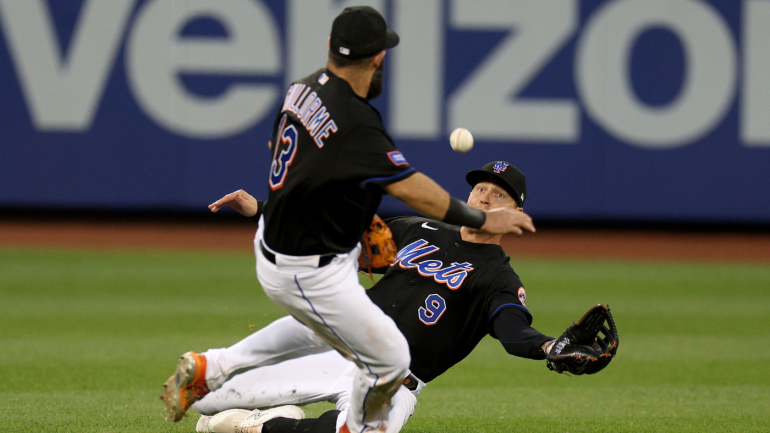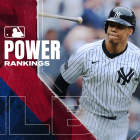
The New York Mets entered Thursday with a 32-36 record, putting them in fourth place in the National League East and 10 games back of the Atlanta Braves. If the playoffs began tomorrow, the Mets would not be involved. It's fair, then, to describe them as one of the league's most disappointing teams.
This is the time of the year when people start thinking about the trade deadline, and about whether this or that team should buy or sell. The Mets seemed like a certain buyer entering the season. It's fair to ask: have things changed now that they've experienced two-plus months of dismal baseball.
Below, CBS Sports has highlighted three reasons why the Mets shouldn't be sellers at the deadline, including the unwieldy nature of their roster and their potential future pursuit of Shohei Ohtani.
1. Immobile roster
The Mets roster has two defining characteristics that separate it from the average club: 1) it's older; and 2) it's more expensive. The Mets' hitters are the third oldest group in the majors, and their pitchers are the oldest by more than two years, according to Baseball Reference. Both of those marks are weighed by appearances, so the numbers aren't skewed by having ancient relievers or reserves. Meanwhile, the Mets have the majors' largest payroll by a good margin -- Spotrac's data has them spending $65 million more than the Yankees, the next closest club.
That combination of age and cost puts the Mets in a tough situation. Even if they wanted to sell, there are only so many teams who could afford some of these players -- and fewer who would also be willing to surrender quality young players in return. The Mets, for their part, are not going to want to trade off catcher Francisco Álvarez or third baseman Brett Baty, their top youngsters. There are only so many other potential trade candidates on the roster with those considerations in mind.
To put it another way, here's a complete list of Mets players who fit three specific parameters: 1) under the age of 30; 2) have a salary this season of less than $30 million; and 3) have at least three years of service time:
- Pete Alonso
- Luis Guillorme
- Elieser Hernández
Alonso is by far the most attractive of the trio. He's also injured and out for upward of a month. So much for that scenario. Otherwise? It's hard to see a pathway where the Mets selling would be a particularly fruitful endeavor. Indeed, there's probably a better argument to be made that the Mets should buy -- for reasons obvious and not.
2. Playoff aspirations remain realistic
The Mets entered Thursday amid a tailspin, as well as with a losing record. That doesn't mean they should give up on their October dreams just yet. The Mets are only four games back of the final wild-card spot, and it's easy to envision them leapfrogging several of the teams ahead of them going forward.
For as poorly as the Mets have played, their minus-23 run differential is still superior to the Miami Marlins', Cincinnati Reds', and Milwaukee Brewers' seasonal marks, and is about even with the Philadelphia Phillies'. Those are four of the seven teams ahead of them in the standings, including one of the current wild cards (Marlins). Keep in mind that run differential is often a better predictor of team quality than the team's actual won-lost record.
Another way to analyze team quality is to turn to projection systems. Those models attempt to ascertain each team's "true talent level" through regression analysis. They then use those estimates to simulate the remainder of the season tons of times. From there, each system can provide a team's "playoff odds." In the Mets' case, they still have fairly solid chances across the board. To wit, SportsLine gives the Mets a 40.5% chance of cracking October, while FanGraphs (32.6%) and Baseball Prospectus (59.1%) flank that number.
Now, you can argue that the models are too optimistic about the Mets based on a number of factors -- for instance, older players, such as many of the ones the Mets employ, can outright crater rather than decline at a smooth rate. Additionally, small-probability events happen every day, in baseball and in life. Probabilistic analysis is a handy tool, but there's no sense pretending that everything in the world goes according to plan or model.
Even so, the exact percentages matter less than the overall idea, which is that the Mets probably have a better chance of salvaging the season and getting into the dance than you might think. That, in turn, is another good argument for why the Mets should add rather than subtract in July. Here's one more.
3. Ohtani pursuit looms
Let's face it. The Mets have to keep one eye affixed to the future throughout this summer, and specifically to what will make them most attractive to this winter's top free agent, Los Angeles Angels two-way phenom Shohei Ohtani.
Ohtani has stressed that his top priority is winning a World Series. Yes, every player with competent media training gives some variation of that answer, but he's actually walked the walk in prioritizing something over money. This is someone who opted to join Major League Baseball at the first possible moment, even though it meant playing for the league minimum salary. Had Ohtani waited a few years, he would've been in line for a massive payday.
Ohtani is certainly going to get his money this winter, when the Mets, the Los Angeles Dodgers, the San Diego Padres, and other high rollers are expected to pursue his services. With everyone offering massive contracts, the separator will be which team Ohtani feels has the best chance of winning a ring. The Mets moving veterans at the deadline would seem only to harm them in that respect.
As such, it almost doesn't matter what the Mets' record is heading into the deadline. It's hard to envision them doing anything but buying.






















